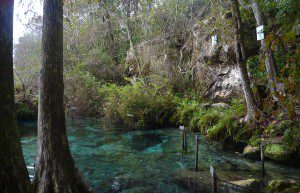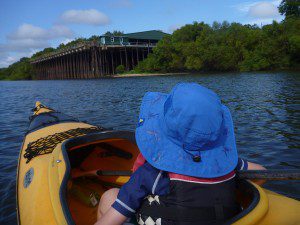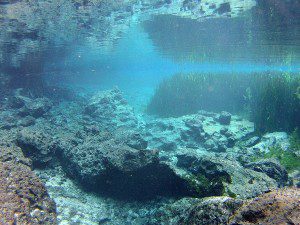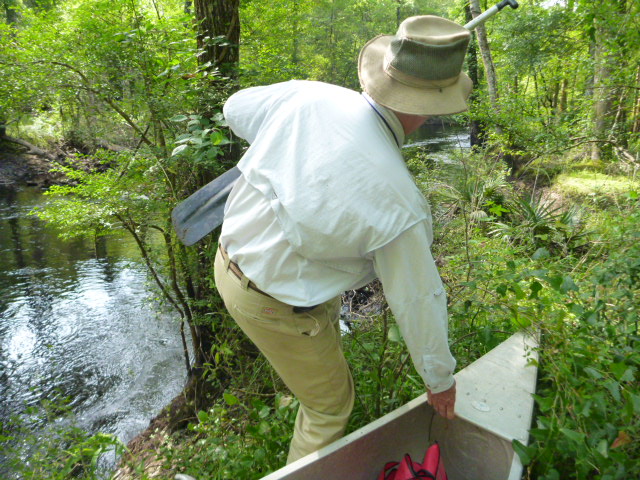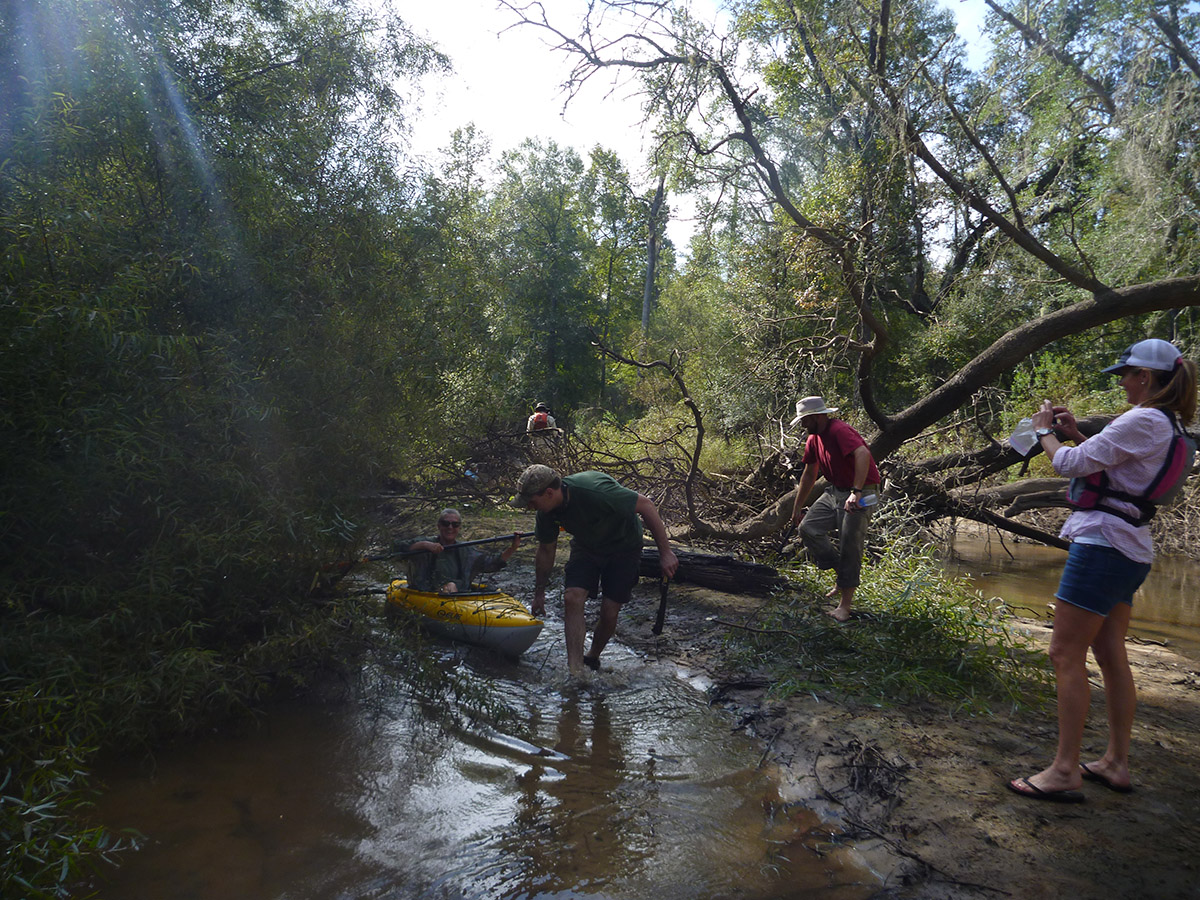Take three minutes off from your busy holiday bustling and escape with us to Merritt’s Mill Pond. Thank you to Crawfordville’s very own Well Worn Soles for letting us use your guitar and fiddle to score our little adventure on the water. Local musicians, we love to have your music on our videos. We’ve had a good response from musicians so far (and so many of you are interested in performing on Local Routes as well), so keep the tunes coming!
Rob Diaz de Villegas WFSU-TV
As it is with many great adventures, Merritt’s Mill Pond was not our original destination that day. For over a year, Chuck Hatcher, Liz Sparks and I have been trying to paddle the Upper Chipola River paddling trail. The idea was that we would hear ghost stories at Bellamy Bridge and paddle past springs and into Marianna Caverns State Park. When we started planning, the Upper Chipola had been newly designated as a Florida state paddling trail. We set a date; it rained that day. Then again on the backup date. We took a few months off and tried it again. Every time, we were rained out or the river was too high from abundant rainfall. It’s been a busy El Niño year in north Florida. Finally, on the day of our failed fifth attempt, Liz, State Paddling Trails Coordinator for DEP, took us to a nearby favorite spot of hers.
Merritt’s Mill Pond maintains its water level through a water control structure at its outflow, a dam that feeds Spring Creek (which in turn feeds the main tributary of the Apalachicola River, the Chipola). According to a 2011 Northwest Florida Water Management District report, water levels only fluctuate between 6-12 inches throughout the year on the pond. With an average of 116-million gallons pumping out of the springs daily, the water stays consistently clear and 68 degrees. So, while a rainstorm two days prior to our shoot inundated the Upper Chipola, Merritt’s Mill Pond was paddle ready. It was also clear enough for me to stick a GoPro in near Shangri-La Spring, where I captured a crawfish chilling on a rock.
We put in at Blue Springs Recreation Area so that we could get a look at Jackson Blue Spring, a first magnitude spring and the headwaters of the pond. The park is open from Memorial Day to Labor Day, but we shot in November. Chuck Hatcher, Director of Jackson County Parks and Recreation, let us in so that we could see the spring. Walking down to the water with camera in hand, we were buzzed by two bald eagles. Did they fly by because of our arrival, agitated by the presence of humans, or, if we had gotten there two minutes earlier (enough time for the camera to be set up at water’s edge), would they still have flown down at that exact moment?
Eagle or no, there was still plenty of wildlife to be filmed on the trip. Cormorants aren’t as sexy a bird, but on a misty, dreary morning, flocks of these black birds hopping from tree to tree did lend a certain ambience. The water was full of tall eelgrass and therefore fish, including the large alligator gar you see later in the video. According to Chuck, locals call these “Marianna Manatees” for their size (average male length is six feet).
Cave Diving, Kayaking, and Fishing in Jackson County
Having returned to Blue Springs recreation area, I saw a couple of divers in the water, ready to enter Jackson Blue Spring. I asked if they minded my getting footage of them, and they replied in an accent I didn’t recognize. Licensed cave divers can purchase a permit at Cave Adventurers, which you’ll pass on the way to Blue Springs. Along with the permit you get the gate code to the park for year-round access. This county’s caves are an international draw.
As for kayaking and canoeing Merritt’s Mill Pond in the off season, there are two year round options- the free Hunter Fish Camp launch at the center of the pond and Arrowhead Campground at the southern end, which has a fee. When Blue Springs is open, they do offer kayak rentals.
Looking at Jackson County’s paddling trail brochure, I see a unique opportunity to explore the Apalachicola watershed. The county runs along the first ten miles or so of the Apalach, starting at Woodruff Dam. That stretch includes the towering Jackson County Port Authority, where barges once stropped on their way down the river from Georgia. The northern part of the county’s border with Georgia is the Chattahoochee River as it flows into Lake Seminole (the lake created by the Woodruff Dam). The Chattahoochee is the main water source of the Apalachicola, though of course the amount of freshwater that enters the latter is controlled at the dam by the Army Corps of Engineers. The Apalachicola’s main tributary is the Chipola, and you can paddle that river before and after it heads underground at Caverns State Park. Jackson County is an interesting slice of the ACF basin.
We got to see some of the paddling and cave diving opportunities on Merritt’s Mill Pond, but it’s also a renowned fishing spot. Here is where the state record red ear sunfish, aka shellcracker (one of the fish served on our recent RiverTrek adventure) was caught. At 4.86 pounds, it was a world record until earlier this year. The Florida Fish and Wildlife Conservation Commission has more information on fishing here.
Jackson Blue Springshed at a Glance
After having taken a good look at Wakulla Springs earlier this year on EcoShakespeare, I was interested in seeing another spring system and getting to know it. Jackson Blue Spring and the other springs of Merritt’s Mill Pond aren’t in any danger of facing ecological turmoil, but they do have a different set of challenges that could be instructive to review.
For one, almost half of the land in Jackson County is being used for agriculture- 33,938 acres in 2004, as compared to 28,765 for upland forests, 3,794 developed lands, and 1,663 for wetlands. Jackson County is the state’s top producer of cotton, peanuts, and corn. Eighty percent of the 130 square mile springshed is in Jackson County, tapping the Floridan Aquifer from an area between the Apalachicola and Chipola. The springs have seen an increase in nitrates over the years, from less than .50 milligrams per liter (mg/ L) in 1960 to between 3.25 and 3.5 mg/ L in 2010. The NWFWMD report cited above attributes this increase to “the leaching of manufactured fertilizer into the aquifer within the spring’s contribution area.” It is still below the 10 mg/ L threshold for drinking water.
For comparison, the Springhill Water Treatment Plant in Tallahassee, isolated as the source of much of Wakulla Spring’s excess nitrates, is planned to undergo renovations to reduce its nitrate output from 12 mg/ L to under 3. While taping EcoShakespeare, springs advocate and former state biologist Jim Stevenson said he would like to have had it be lower still, but that just below 3 was acceptable.
Another threat to Wakulla Spring is over pumping. While no definitive cause has been found for the darkening of the water flowing from Wakulla Spring, one theory is that the usage of water in the Wakulla Springshed (Roughly between Tallahassee and Thomasville) has reduced the amount of water in the aquifer to the north, reducing pressure and letting tannic water in from springs to the south of the Wakulla system. Overpumping of groundwater is a major issue facing many springs and aquifers.
Jackson County uses about 8 million gallons per day, a vast majority by agricultural operations. It’s a small fraction of the 116 million gallons that emerge from Merritt’s Mill Pond Springs, and the Water Management District hasn’t found it to be of concern. The spring’s discharge appears to correlate closely to the amount of groundwater in the springshed, with the major threat to the spring being drought. The report was published a year before the big 2012 drought, but it was hit hard during the 2007 drought. Then, discharge dipped to 40 cubic feet per second, or just under 26,000,000 gallons a day.
Discharge in the report was measure in Cubic Feet per Second. I used this online tool to convert the amount to gallons.
Never the Same River Twice
The ancient Greek philosopher Heraclitus once said “you could not step twice into the same river.” He was referring to the constant flowing of water; a moment after stepping into a river, the water around you has already moved downstream. That quote neatly sums up our not-so-neat efforts to schedule kayak and canoe shoots this year, and reminded me that the randomness of nature is part of its allure.
The rain wreaked havoc with our attempts to paddle the Upper Chipola. Last May, David Ward had scouted our Aucilla River adventure a couple of weeks before shooting. During the intervening time, there was a lull in what had been consistent rain and the water had dropped a couple feet. Several snags (fallen trees) were exposed, doubling the trip time.
A few months later, we tagged along as a team of students scouted/ surveyed the Ochlockonee River Water Trail on the Georgia side of the river. That adventure, which will air next March as part of our Red Hills series, made the Aucilla trip look like a walk (paddle?) in the park. The water was low, and we portaged several times. The students, studying Geographic Information Systems (GIS) at Thomas University, marked each impediment and cleared branches for an upcoming trip. Slow? Yes. But it was a different way to get to know a river, wading in shallow water and climbing up into the floodplain.
Just a couple of weeks later, and without much rain in between, my four-year-old son Max and I were on the Apalachicola for RiverTrek, and the water was as high as I’d ever seen it. It amazed me that two rivers located within 50-60 miles of each other could have such different water levels. The levels of the Apalachicola on each of my RiverTrek experiences in particular drive home the Heraclitus quote. After record lows in 2012, the water was high enough in 2013 to cover many of the sandbars we had used the year before. In 2015, the Esiffanulga sand bar that was huge in ’12 and skinny in ’13 was totally under.
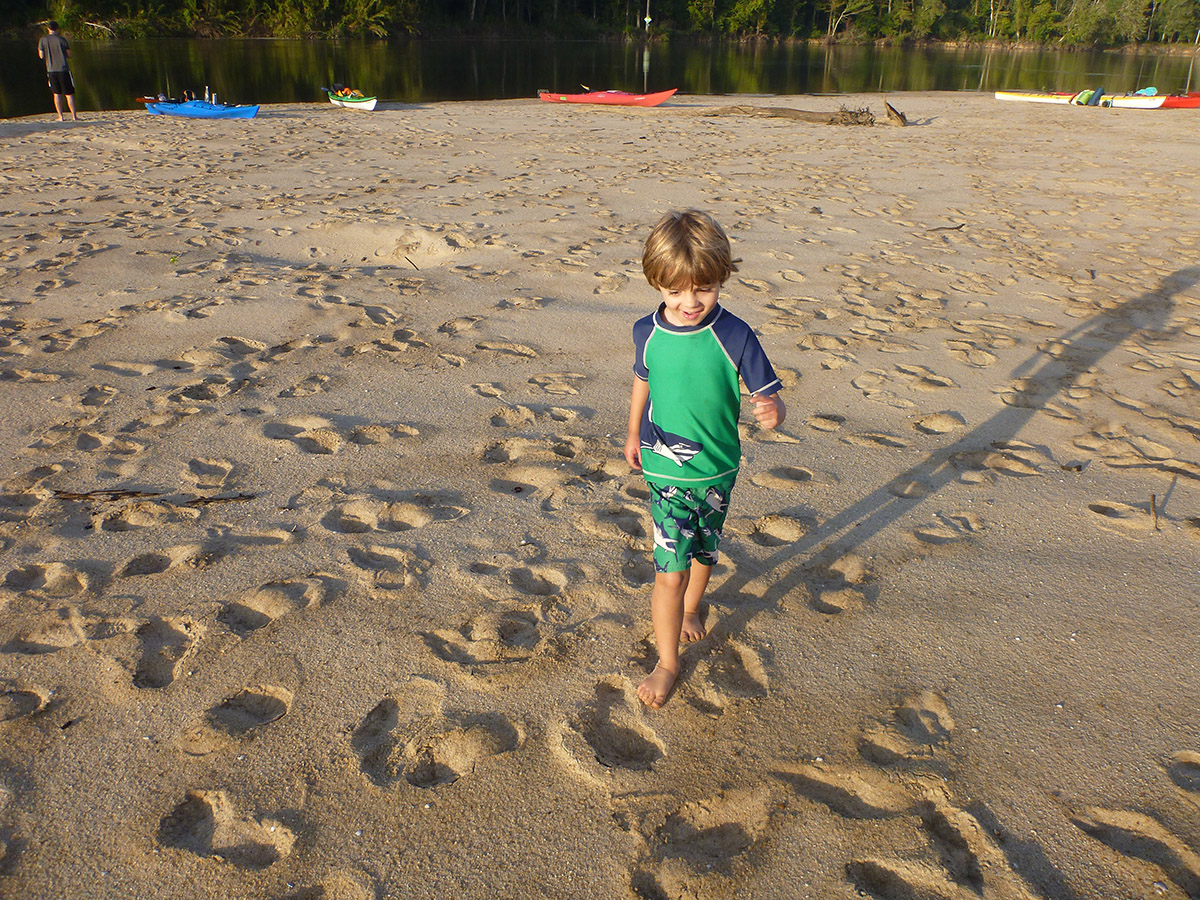
The Apalachicola River has many sand bars on which to camp and play. To a four-year-old (and, to be honest, his dad), every one is a new world to explore. Fluctuating water levels have forced RiverTrek paddlers to change campsites in every year following 2012’s drought.
Rivers live and breath like the many animals that live in or rely on them. On one visit a river might be high and fast; on the next, you’re bumping logs. You never know what animals you might see, or what flowers might be in bloom. I like riding Space Mountain, but there aren’t likely to be any surprises in store for me whenever I get back to Disney. On a river, I can pull off on a different sandbar or clearing and explore a new area, as we did on the 2013 ‘Trek when we bushwhacked to Aspalaga Blue Spring. It’s this element of the unknown, tinged as it is with the potential for disaster, that makes it worth our while to get out in nature. I hope everyone had a great 2015 on the water and in the woods, and here’s to a happy, healthy, and wild 2016.
Come adventure with us on our local waterways, fire dependent forests, living coastlines, and More! Subscribe to the WFSU Ecology Blog by Email.

